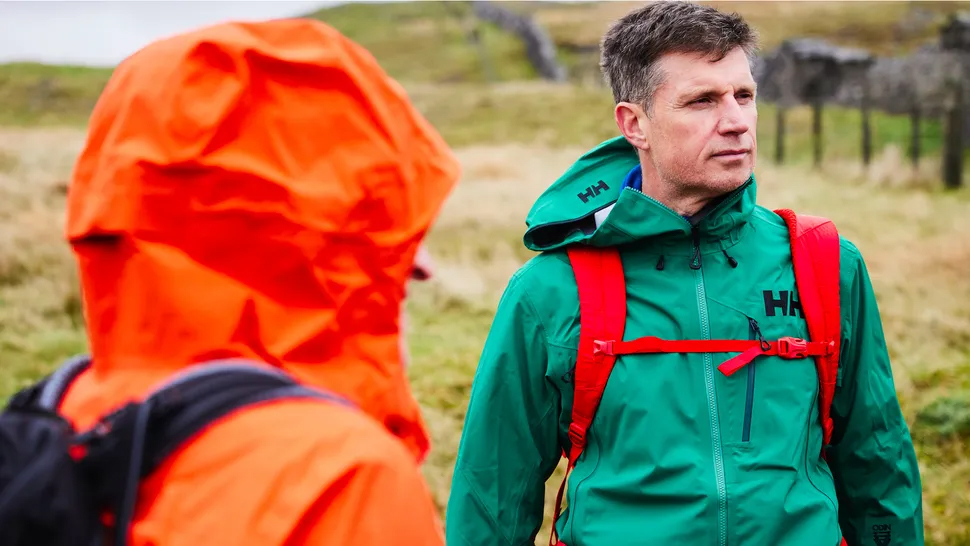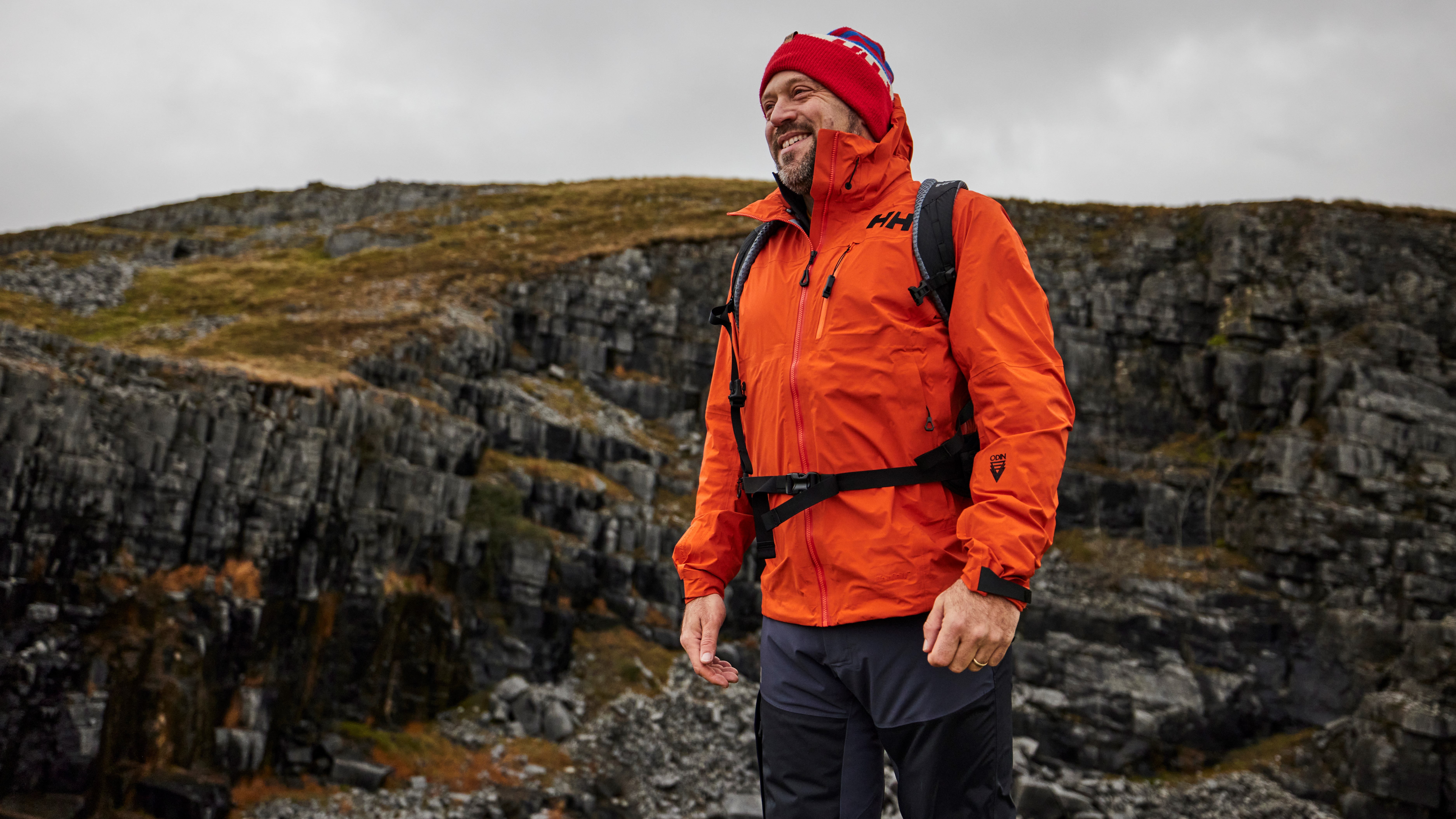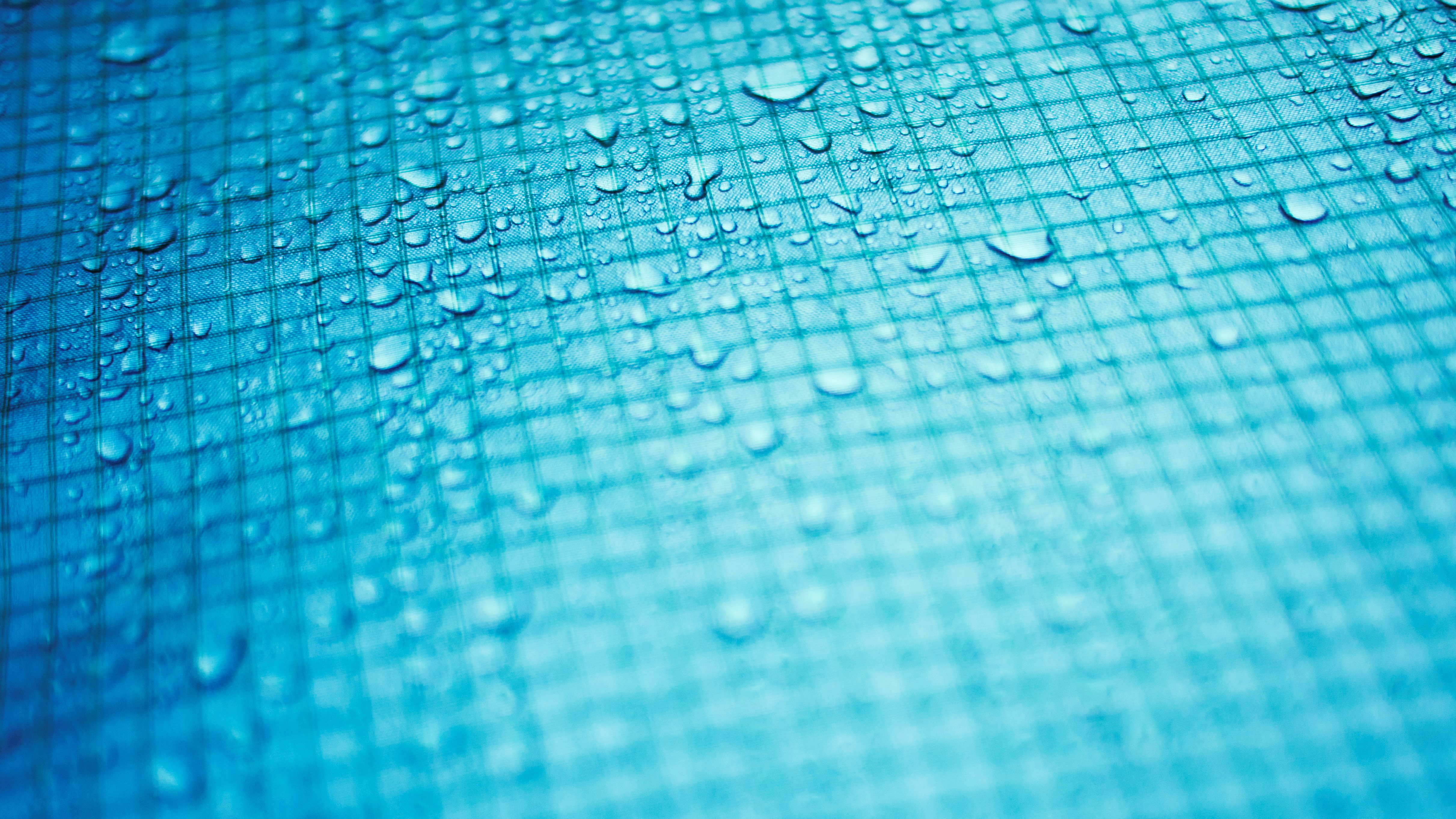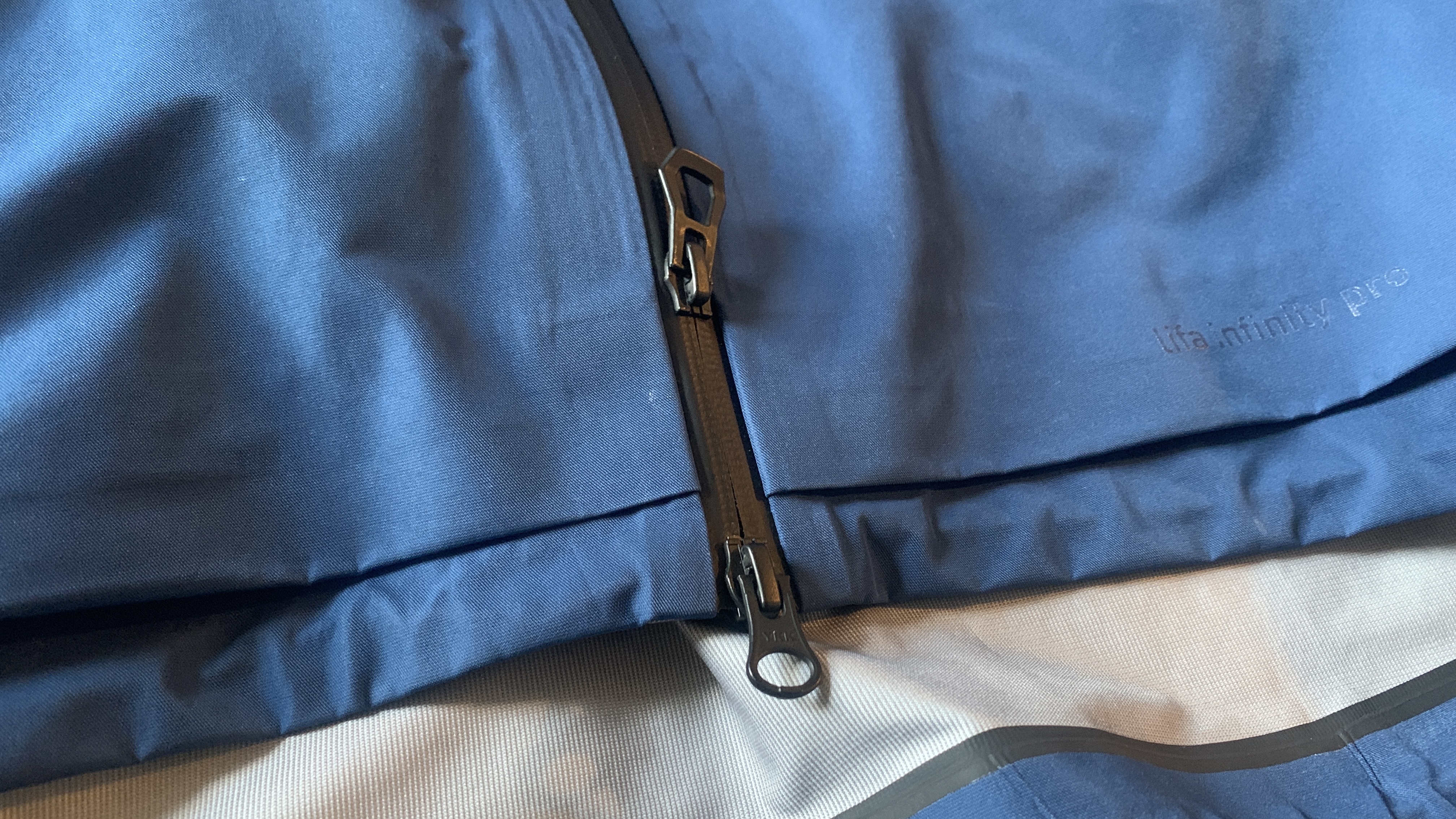What makes a waterproof jacket waterproof?
Discover all the trimmings that make sure your waterproof jacket will be bombproof in a storm

What makes a waterproof jacket waterproof? I’ll be honest, this isn’t something I gave a lot of thought to before I became an outdoors journalist. After all, I spent the previous decade living in the Colorado Rockies, where it never rained.
Yes, I’m from Scotland, but that just means that I grew up being very used to getting wet on my adventures. Times have changed though, and while Scotland is still very wet, weatherproofing technology has come on leaps and bounds and in the last few years, I’ve got to test a lot of waterproof jackets and I’ve learned that these fundamental pieces of outdoor kit are a whole lot more than just a waterproof fabric.
In fact, gear like my Patagonia Triolet Jacket has all kinds of tiny features and innovations I’d never paid any attention to that it turns out add up to a waterproof jacket being an absolute workhorse versus a soggy disaster.
If you’re looking for some really solid rain protection, read on to discover the features to look for in any waterproof jacket you’re considering.

1. Waterproof membrane
First of all, a waterproof jacket needs to actually be made using a waterproof membrane – if it isn’t, then it’s merely water-resistant – which is another thing I only theoretically understood until I went on a trip to Cairngorms National Park in Scotland with none other than GORE-TEX. During the trip, we got to try out some gloves made of the company’s famed waterproof membrane which were white, wafer thin and looked a bit like lab gloves. I squatted down and submerged my hands in a lake for a while and they stayed dry.
A three-layer waterproof jacket will have an outer, or face, fabric made of a material that you recognize, like nylon or polyester, and an inner layer made from the same or similar fabric. My Triolet jacket is purple on the outside and gray on the inside. But in between these two layers of fabric is sandwiched that micro thin membrane which is bonded to the two layers of material.

2. DWR finish
In addition to that concealed, hard-working membrane, a waterproof jacket will also be treated with a Durable Water Repellent, or DWR coating. We’ve written a whole article about what DWR is and how it works, but in short these are chemical treatments applied to the face fabric of garments, tents, and sleeping bags to make them hydrophobic (water resistant). DWR is often described as your first line of defense against wet weather.
All the latest inspiration, tips and guides to help you plan your next Advnture!
The DWR is the aspect of your waterproof jacket that makes the rain bead up on the surface rather than being absorbed by the fabric. DWR wears off over time, but it doesn’t mean that your membrane isn’t still working and you can reapply it at home with products like Nikwax.
Like waterproof membranes, DWRs have historically been fluorocarbon-based products, but due to public demand, more sustainable alternatives such as Nikwax are becoming available. My Triolet jacket is treated with a PFC-free DWR but the water beaded and rolled right off even when I stood in a heavy shower.

3. Taped seams
A jacket can be made from the right fabric and be doused in DWR, but its actual construction really determines whether it holds the rain off when the heavens open. One of the key aspects of design is taped seams, which are just like they sound.
Take two impenetrable pieces of waterproof fabric and sew them together and you’ve instantly created a weak spot where the seams meet and in all the tiny holes created in the sewing process can allow moisture to penetrate. The answer? Lay waterproof tape over those seams to reinforce them.
When I turn my jacket inside out, I can see that every single seam is overlaid with a piece of tape just over a half inch wide that is the same color as the lining. It may seem innocuous at first glance, but I recently tested a waterproof jacket by H&M where they’d forgotten to tape the seams around the hand warming pockets and when I stood outside in a moderately heavy shower wearing it, I was wet in just 10 minutes.

4. Waterproof zippers
Though your jacket will be made with a fully waterproof fabric, the zips that fasten it, and its pockets, aren’t necessarily waterproof. A non-waterproof zipper will look, well, like a normal zipper. A series of metal teeth with fabric on either side that probably isn’t waterproof. You don’t want a zip like that on a waterproof jacket.
I peer closely at the zip on my waterproof jacket and, when zipped up, it appears more like a strip of plastic or waxy fabric with a barely visible slit down the center and I can't see the metal teeth at all. Waterproof zippers are built so that the zipper part is enclosed, or hidden, by a waterproof fabric that’s usually plastic-based. This means that any water that falls on the zip just rolls off the plastic covering and can’t get through the micro gaps between the teeth of the zipper.

5. Storm flap
A storm flap is a pretty standard detail on most jackets, but it’s still helpful to know why it’s there. This is the piece of waterproof fabric that sits (or overlays) just behind your front zipper. This forms a secondary protective barrier so that if any moisture does breach your zipper, it won’t reach your mid layer. The storm flap on my jacket is about an inch wide, which is enough to offer proper protection and also to keep it from easily getting caught in my zipper, but these can even be a little wider.

6. Zipper garages
Zipper garages are a new, and adorable, term for me that I only recently learned about when I discovered that I’ve been zipping up my jackets all wrong. Your waterproof zipper will provide a lot of protection, but there’s still a crack where rain can leak through and that’s at the very top of the zipper, especially if it’s not completely closed. Enter the zipper garage.
Looking closely, each of the three zips on my waterproof jacket has a little pocket at the top. When my zipper is zipped all the way up, I can ensure total rain protection by snuggling the zipper into this little pocket, or garage, where it will stay warm and dry. The pull tabs ensure I can easily pull it back down when I’m ready.

7. Low-wicking barrier
Obviously, when you’re hiking in the rain, the most waterproof option would be some kind of non-permeable bubble, but such are the laws of nature that our clothing needs to have holes so we can get in and out of it, and so that we can breathe. Those “holes,” in particular the hem, sleeves and collar of your jacket, provide one more opportunity for water to find its way to the inside of your jacket.
When you get soaked in a deluge, it’s technically possible for that water to be pulled up on the inside of your jacket, via the hem and sleeves, especially if they’re being drawn up by moisture wicking material that’s designed to do just that. To prevent this, my jacket has a band of black fabric a little over an inch wide on the inside of the hem and sleeves called a low-wicking barrier to foil any attempts at an aquatic invasion. There are also low-wicking barriers on the back of the neck and hood, so those areas don’t pull in water if I’m walking with my hood down.

8. Adjustable peaked hood
Finally, my jacket has a pretty epic hood with a stiff peak that juts out over three inches above my face. Peaked hoods definitely add a little bulk and weight, but they do a much better job of keeping your face dry in a downpour than a regular hood and that actually helps prevent rain from penetrating.
If your jacket doesn't have a hood or it doesn’t keep the rain off properly and your face gets soaked in a lashing rain, that water then pours down your neck and heads off to soak your base layer and you end up wet from the inside. A good waterproof jacket will have an adjustable peaked hood that you can cinch snugly around your head so it stays up in the wind.
Julia Clarke is a staff writer for Advnture.com and the author of the book Restorative Yoga for Beginners. She loves to explore mountains on foot, bike, skis and belay and then recover on the the yoga mat. Julia graduated with a degree in journalism in 2004 and spent eight years working as a radio presenter in Kansas City, Vermont, Boston and New York City before discovering the joys of the Rocky Mountains. She then detoured west to Colorado and enjoyed 11 years teaching yoga in Vail before returning to her hometown of Glasgow, Scotland in 2020 to focus on family and writing.

